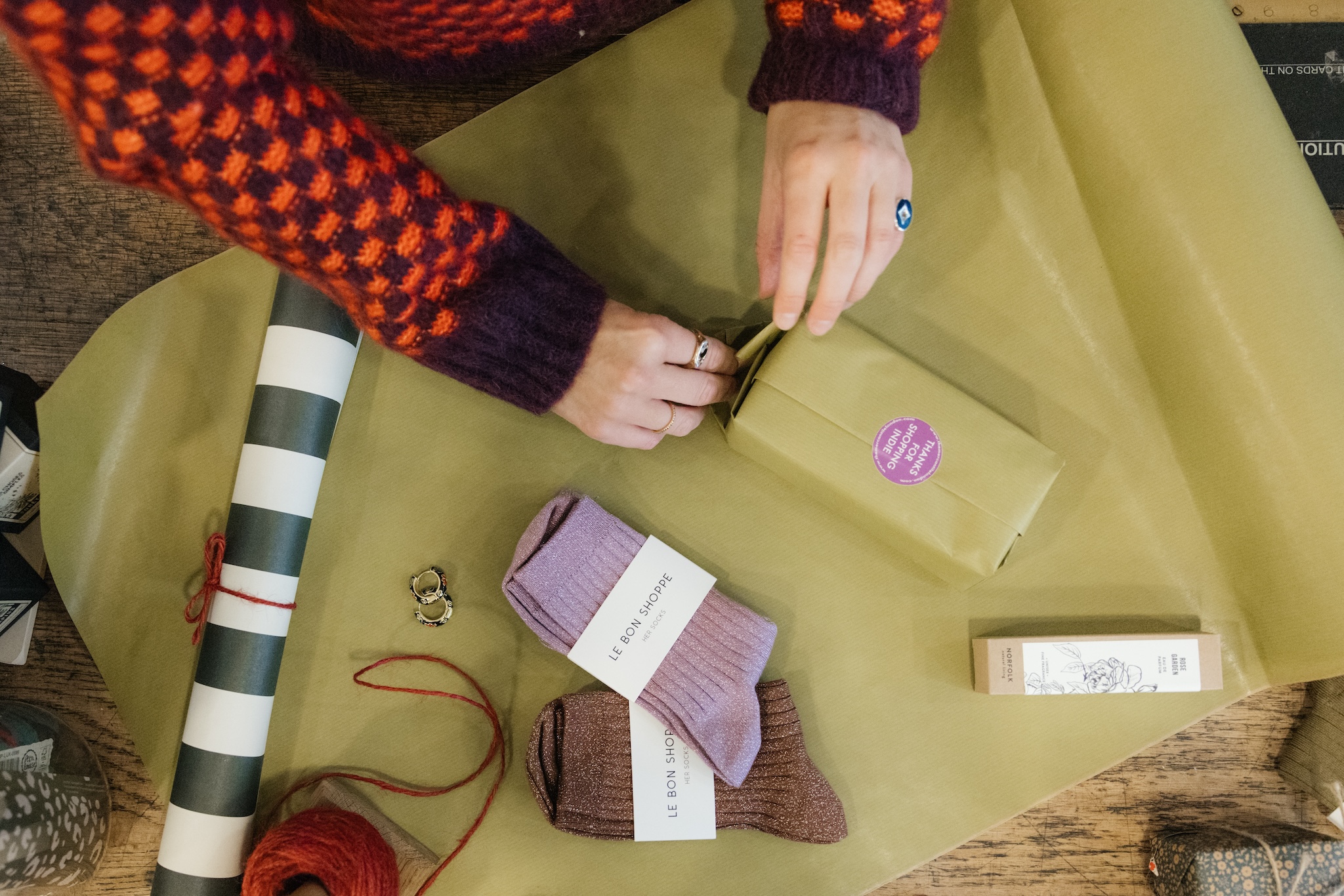

Think about the last time you visited a retail store. There are things that likely made it more appealing to you as a shopper. Maybe there was a colorful window display, clear and helpful signs, cozy lighting, or a thoughtful and meticulous arrangement to the space that made you want to browse there the entire afternoon. That’s the power of retail merchandising.
When people shop online, that expectation of a warm, welcoming experience doesn’t go away, and there’s plenty you can do to facilitate a great shopping journey. This is called e-commerce merchandising.
The tactics for e-commerce merchandising might be different from that of a brick-and-mortar store, but the goal is the same. You want to draw people in, encourage them to stay awhile, and help them discover their next favorite product.
With nearly a quarter of global sales estimated to take place online by 2025, it’s more important than ever for retail brands to get e-commerce merchandising right.
What is e-commerce merchandising?
E-commerce merchandising is the art of presenting your products in the best possible way so that online shoppers can’t help but click “add to cart.” Your e-commerce store should celebrate your brand and encourage discovery. All the decisions you make about how you organize and customize your site must be deliberate—from the colors you use (neutral or bold?) to the product photos you pick (lifestyle or studio?) to prices, descriptions, site architecture, and more.
The e-commerce merchandising checklist: 10 tips to improve your online shopping experience
E-commerce merchandising looks different from brick-and-mortar merchandising. For the in-person shopping experience, you have all five senses to play with. You can introduce your brand through touch, smell, or even taste. For e-commerce, you rely heavily on sight. You want to create a streamlined visual experience for shoppers. Here’s how:
1. Embrace your brand’s identity
Brand identity is how your brand looks and feels to shoppers. Developing a strong identity is the first step to building a beloved brand. Consistency is key: Your brand name, logo, color scheme, typography, writing style—these should all be cohesive.
2. Prioritize product photography
Great product photography and strong product descriptions are essential to selling your items. Crisp, high-quality images make it easier for shoppers to imagine how the products might fit into their lives. Photos should be well-lit, have high resolution, and clearly show the item you’re selling. Keep your shoots uncluttered, with simple backgrounds that don’t detract from the focus of the photo. Product descriptions should be written in your brand’s voice and get shoppers excited about what you have to offer.
3. Use video to show off your products
Video is a great way to give your shopper a fuller picture of what it would be like to hold or use your product. You could shoot product close-ups to show fine details of items, use a video to answer frequently asked questions about a product, or even do a product demonstration. Makeup tutorials are a great example of how video can bring an item to life on-screen. You might already be creating videos for social media, so you might consider embedding them on your website as well.
4. Curate and categorize your best products strategically
The same way you would curate the space in a physical store applies to your e-commerce store. Online stores often use filters or collection pages to group similar products together, so shoppers can find what they’re looking for quickly and simply. If your e-commerce shop sells home goods, perhaps you might create collection pages for living rooms, bedrooms, kitchens, and so on. Careful curation, whether it’s online or offline, can build stronger connections with shoppers and strengthen your branding.
5. Ensure your site is simple to navigate
UX design, or user experience design, is about making a journey online as intuitive and easy as possible. You never want a shopper to be unsure how to purchase something on your site! Good UX means that your navigation bar is easy to find, your categories are clearly labeled, and your “buy” button is impossible to miss. (For a more in-depth guide on UX design and its benefits, check out this helpful article from UX Planet.)
6. Make the most of your homepage
As an e-commerce store, your site’s homepage is your window display. It’s that first impression that piques a shopper’s curiosity. With a cursory scroll, shoppers should be able to easily discern what your brand is about and why your products are appealing. Don’t clutter up your homepage with too much information—instead, prioritize clarity and simplicity. Be sure to choose images, colors, and copy that align with your brand identity.
7. Don’t forget about cross-selling and upselling
In a brick-and-mortar store, you could upsell products by running a two-for-one special on scarves. Or you might place inexpensive impulse buys like lip balm or nail polish near the register. In e-commerce it happens a little differently.
E-commerce brands use interstitials (a fancy word for pop-ups) to remind shoppers of deals and specials before they check out. You can also feature additional products on the checkout page that complement the item the shopper is buying. If someone is buying face wash, perhaps your site recommends a facial mist as well. The Shopify experts at Aeolidia recommend designing a long-form product detail page to help convert your customers using upsells and other features.
8. Upgrade your search functionality
The search function of a website allows shoppers to find what they’re looking for quickly. Your search function should be accurate and capable of sorting by price, relevancy, customer ratings, or other characteristics.
For high-intent shoppers (shoppers who know exactly what they want to buy), being able to pop a search term into the bar is crucial. If you want to take search to the next level, use predictive text that autocompletes with a recommendation as the shopper types their query. Here’s a deep dive into strengthening your site’s search functionality.
9. Use AI and personalization to predict what your shoppers want
Artificial intelligence can help create a unique, personalized experience for your shoppers. Think of your favorite streaming service … apps like Netflix or Spotify use AI algorithms to curate personalized recommendations for you based on your past behavior and preferences. E-commerce sites can harness the same technology, and many retail brands use software tools like Lindy, ViSsenze, Constructor, Dynamic Yield, and Google’s Vertex AI Search to better personalize shopper experiences. AI tools sift through user data and present shoppers with product recommendations that are most relevant tofor them.
10. Don’t overlook the mobile experience!
More and more people are making purchases on their phone: In fact, 76% of adults in the United States buy items online via their smartphone, according to Pew Research. This number will skew even higher if your target demographic is under 50. So be sure to optimize your site for mobile viewing.
According to Google, nearly half of all visitors will leave a mobile website if the pages don’t load within three seconds. That means that you definitely don’t want any wonky page loading or annoyingly large images showing up on your shoppers’ phones. Optimizing could mean simplifying your navigation menu, using touch-friendly buttons, and ensuring your screen automatically adjusts to fit whatever size screen it’s being viewed on—this is known as responsive design. Google has some more helpful tips in this guide.
Final thoughts
Thoughtful merchandising can take a shopper from casually browsing to making their first (of hopefully many) purchases. The better you do it, the more your site will resonate with shoppers. You have stellar products and a brand that matters, so use e-commerce merchandising to showcase that in the best way possible.




